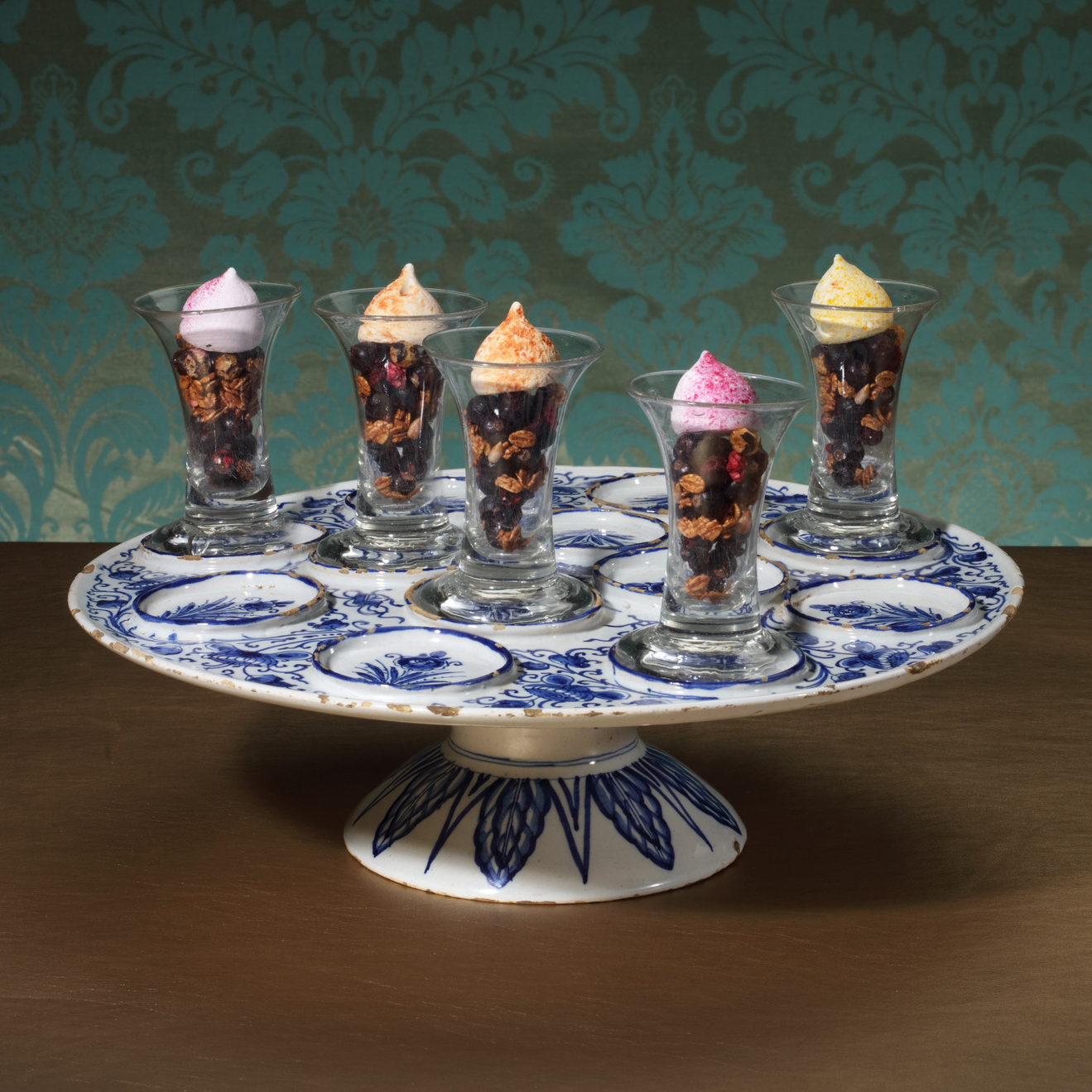![]()
Images on this website are licensed under a
Creative Commons Attribution-NoDerivs 3.0 Unported License.

OBJECT
•D2423. Blue and White Tazza
Delft, circa 1715
Marked AR 5 attributed to Adriaa[e]n van Rijsselbergh[e], who was contracted as a gold painter by De Grieksche A (The Greek A) factory in 1713, and whose production period is thought to range from 1701 until his death in 1735.
The center painted with a chrysanthemum and leaves, surrounded by four Chinese symbols for luck and a wide floral scroll band on the rim, reserved with twelve raised roundels filled with flowering chrysanthemums sprigs, the circular waisted pedestal base with stiff leaves. We acknowledge with thanks the assistance of our colleagues and friends at Frides Laméris Kunst- & Antiekhandel in determening the purpose of this piece and for lending the desert glasses on the previous page.
DIMENSIONS
Diameter 33cm. (13in.)
NOTE
The early tazza, or cup in Italian, was a wide, bowl-shaped glass on a tall stem. The vessel was used for serving wine across Europe and England since the sixteenth century. It soon developed into tall ornately decorated cupped dishes intended for decoration, as well as for food. The foods served on a tazza were generally small, as hors d’oeuvres and desserts. Dining culture continued to develop in the eighteenth century, and the elegant, elevated shape of the tazza created additional space on the lavishly set tables. This exact tazza model with twelve raised roundels is unknown. Although related, the few other objects with raised roundels have served a different purposes. For instance, a dish on a hinged stand in the collection of the Groninger Museum, with six raised roundels, is suggested to hold bottles or small bowls with oil, vinegar and cruets (illustrated below). Notably, the roundels on our tazza are larger in diameter and flat. Their size precisely accommodates the foot of early eighteenth-century jelly glasses— small glasses designed for serving desserts like jellies, syrups, or liquors. This idea is further bolstered by a print by James Gillray dated 1792 in the collection of the British Museum, entitled ‘A Voluptuary under the Horrors of Digestion’. It shows a tazza pyramid with glasses, next to a bottle of Velnos vegetable syrup.
SIMILAR EXAMPLES
A blue and white dish on a high stand (inv. no. 1987-0078) is in the collection of The Groninger Museum, described in ‘Mededelingenblad Nederlandse Vereniging van Vrienden van de Ceramiek,’ no. 140. The dish contains six raised medallions, spread evenly on the surface. Although smaller and a different model, it could have served the same purpose. Similar dishes are known in Japanese Imari.









